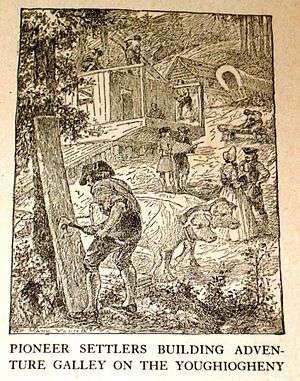American pioneer

American pioneers are any of the people in American history who migrated west to join in settling and developing new areas. The term especially refers to those who were going to settle any territory which had previously not been settled or developed by European, African or American society, although the territory may have been inhabited by or utilized by Native Americans.
The pioneer concept and ethos greatly predate the migration to parts of the United States now called Western, as many places now considered as East were also settled by pioneers from the coast. For example, Daniel Boone, a key figure in American history, settled in Kentucky, when that "Dark and Bloody Ground" was still undeveloped.
One important development in the Western settlement was the Homestead Act, which provided formal legislation for the settlers which regulated the settlement process.
Pioneers
Various figures in American folklore and literature typify the pioneer. James Fenimore Cooper's The Deerslayer (1841) became the most successful of his early series, the Leatherstocking Tales, about pioneer life in the Province of New York. Laura Ingalls Wilder's Little House on the Prairie series, published a century later in 1932-1943 but set in the 1870s and 1880s, typified later depictions of pioneer families. Daniel Boone (1734-1820) and Davy Crockett (1786-1836) became two real-life icons of pioneer history.